Introduction
Generaider was one of the three archetypes which debuted in Mystic Fighters. Alongside Mathmechs and Dragonmaids, they hit the TCG in late 2019. Though it lay dormant for around 6 months, in today's metagame it sees much more play than the former two. But how could the weakest of the trio rise up to Rogue status in a format plagued by Eldlich and Adamancipators?
First Impressions
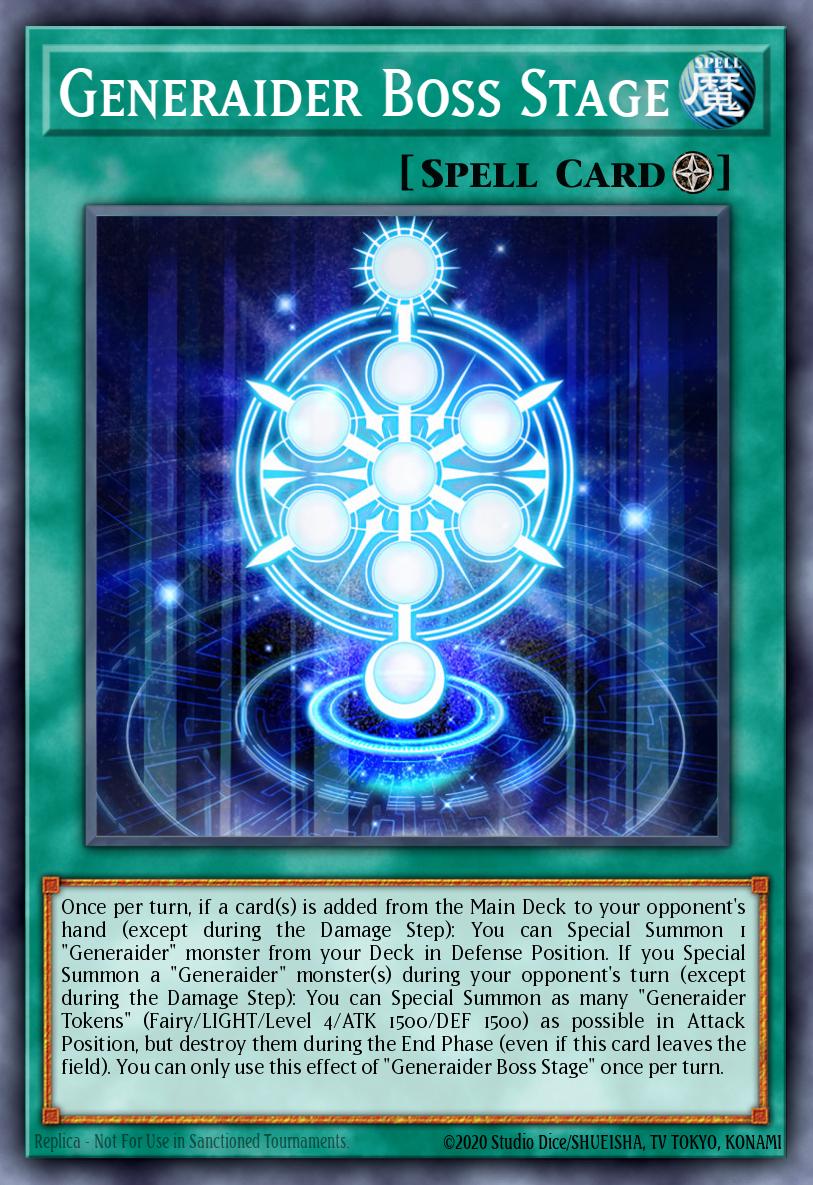
For those who aren't familiar, the deck revolves around its field spell, Generaider Boss Stage. Its strongest component being that it'll trigger during your opponent's draw phase, giving you a free Generaider monster and tokens if it resolves.
While there hasn't been a shortage of archetypes that need their field spell to function, few are as dependant on it as Generaiders. All the main-deck monsters at the time were level 9, making it tough to bring them out without it.
As for a normal summon, they were pretty much locked into Lonefire Blossom. Its main use being cheating out Mardel, Generaider Boss of Light, their Elemental HERO Stratos.
Even if Boss Stage brings them out from the deck and gives tokens as ammo for free, it was still quite awkward to use. A single Ash Blossom & Joyous Spring would end their turn completely, leaving them wide open for an OTK. There was also the issue that there wasn't anything good to bring out.
Naglfar, Generaider Boss of Fire only provided some paltry protection. You'd still have to destroy something to shield your other cards too, making it no Dingirsu, The Orcust of The Evening Star.
Nidhogg, Generaider Boss of Ice was by far the best option for a long time. But it wasn't nearly enough to carry the deck by itself. Negating a summon is an extremely powerful effect, but just doing that once isn't nearly enough to carry the deck by itself.
Less Notable Members
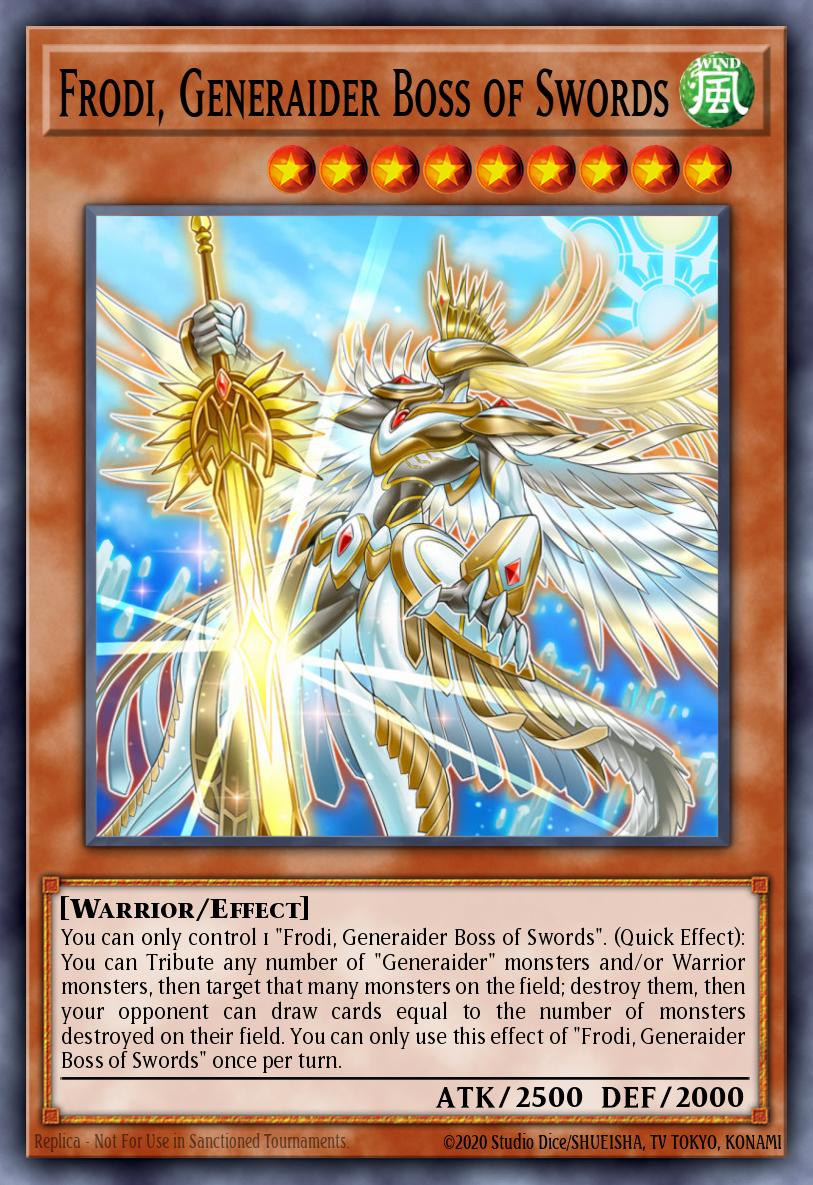
Frodi, Generaider Boss of Swords is and has always been a laughable card. It's the poster boy for the archetype's early obsession with making your opponent go plus. Something that wouldn't quite make sense until they got their newest wave of support. There was no reason why you'd want your opponent to draw during their turn, Boss Stage would always activate during their draw step anyways. Doing it on your turn assumes Frodi actually lived through a turn and you still have your Boss Stage, which is a pretty tall order by itself. I've gotta give it some credit, though. I can't think of any other card that allows your opponent to draw 5 cards, besides Morphing Jar.
Generaider Boss Loot continued to follow this horrendous trend, packing two straight up contradictory effects. The way it works, it's almost as if you're supposed to crash your monsters into the opponent and let them get destroyed so your opponent can draw 1 card. At least it had the decency to make that draw a hard once per turn.
More Notable Members
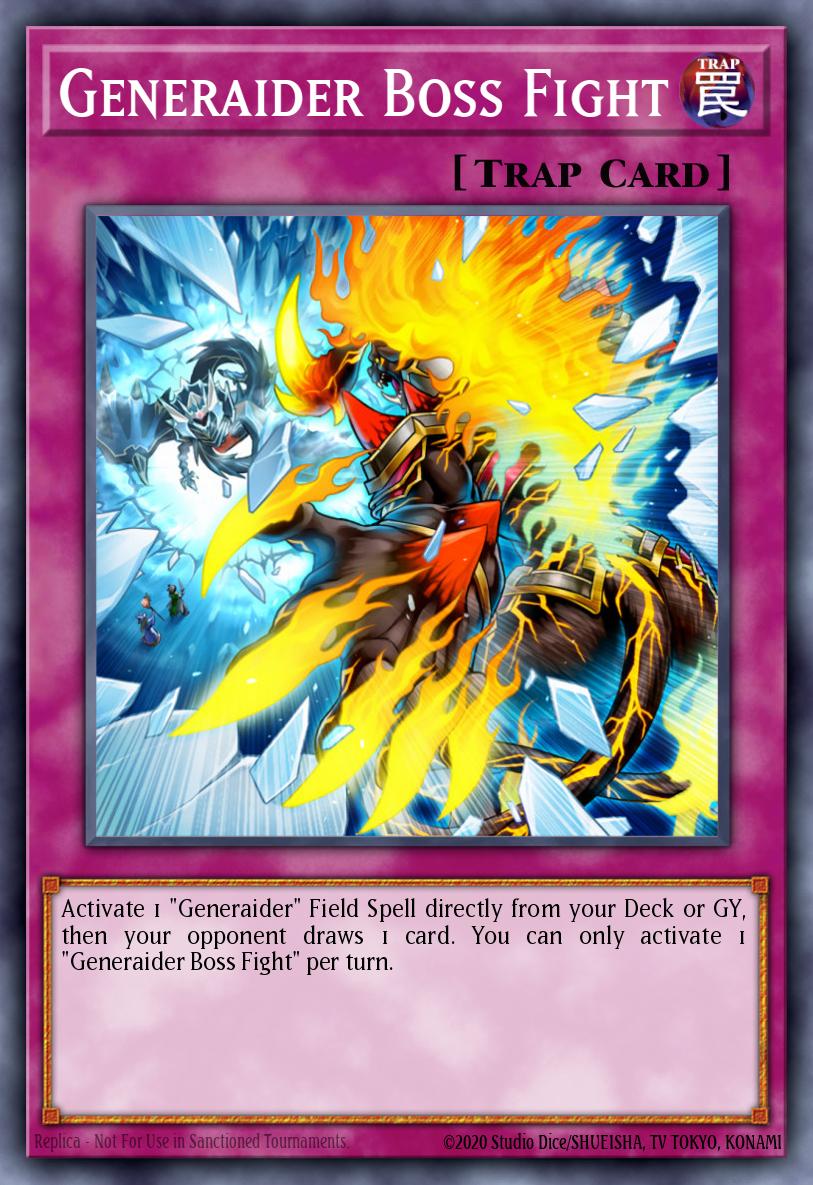
Generaider Boss Fight was pretty much the only card with a decent justification for making your opponent plus. Their field spell's effect that summons Generaiders is just a soft once per turn. This means you could exploit that with Boss Fight to bring up an extra Generaider to interact with the opponent. Generaider Boss Quest was also amazing, allowing you to search your field spell while also shuffling your Garnets. Its existence made Generaider Boss Room a 1-of that was always worth running as well.
Hela, Generaider Boss of Doom was a decent card for grind games, but didn't really do anything turn 1. World Legacy Monstrosity was also a no-brainer, though it was pretty bricky. If you opened it with Blossom, it'd allow the deck to do what was its only worthwhile play for a long time: True King Of All Calamities.
IGAS Release
Utgarda, Generaider Boss of Delusion was exactly what the deck had needed for a long time. A strong piece of interaction and removal, with an always-relevant banish effect. Being able to remove monsters without having to go into Rank 9s or make your opponent draw was really good.
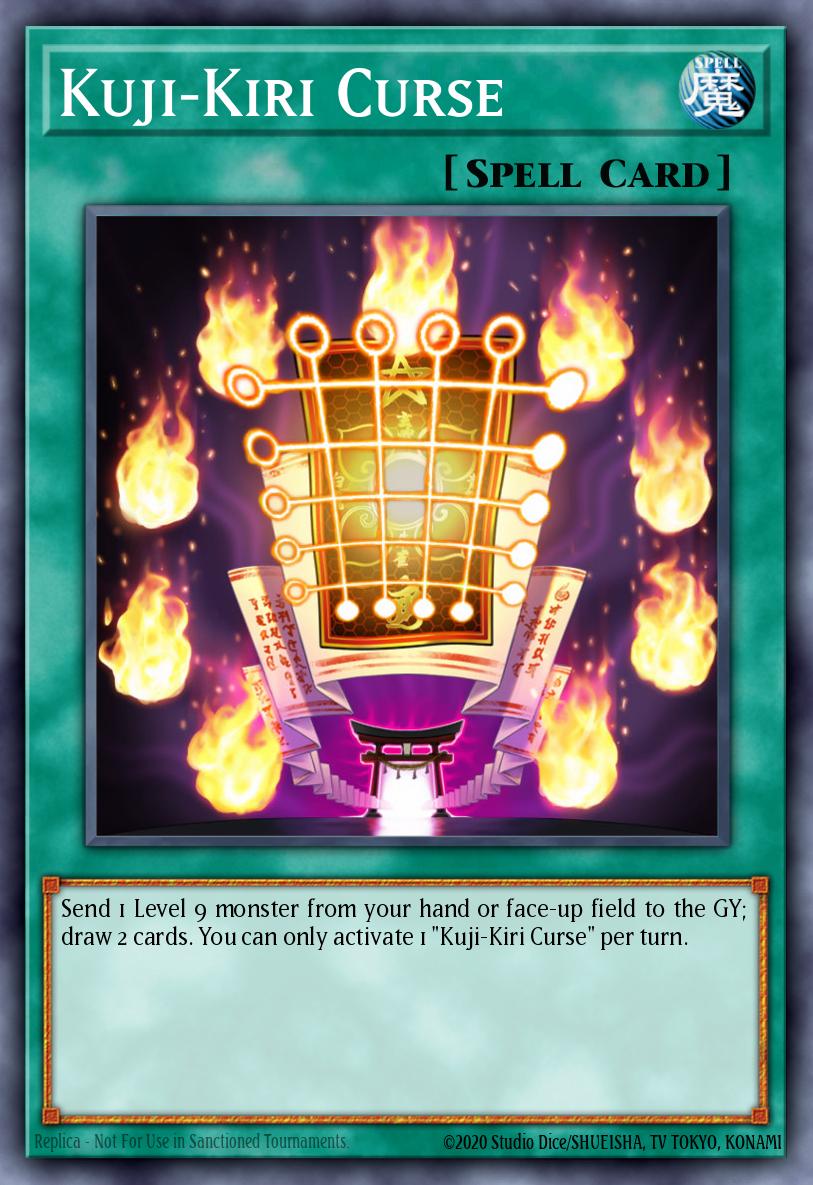
There was also the release of Kuji-Kiri Curse, a level 9 version of Trade-in. It was a hard once per turn, and Generaiders are a rare case where they'd rather have their monsters in the deck. But consistency boosting is always welcome, and at least it has synergy with Hela.
Nine-Lives Cat is much less relevant compared to those two, but still worth mentioning. It wasn't that much, not nearly enough to make it even a rogue contender in the format at the time. The deck would continue as one of the many weak untiered strategies which died to a single interruption until May 2020.
ETCO Release
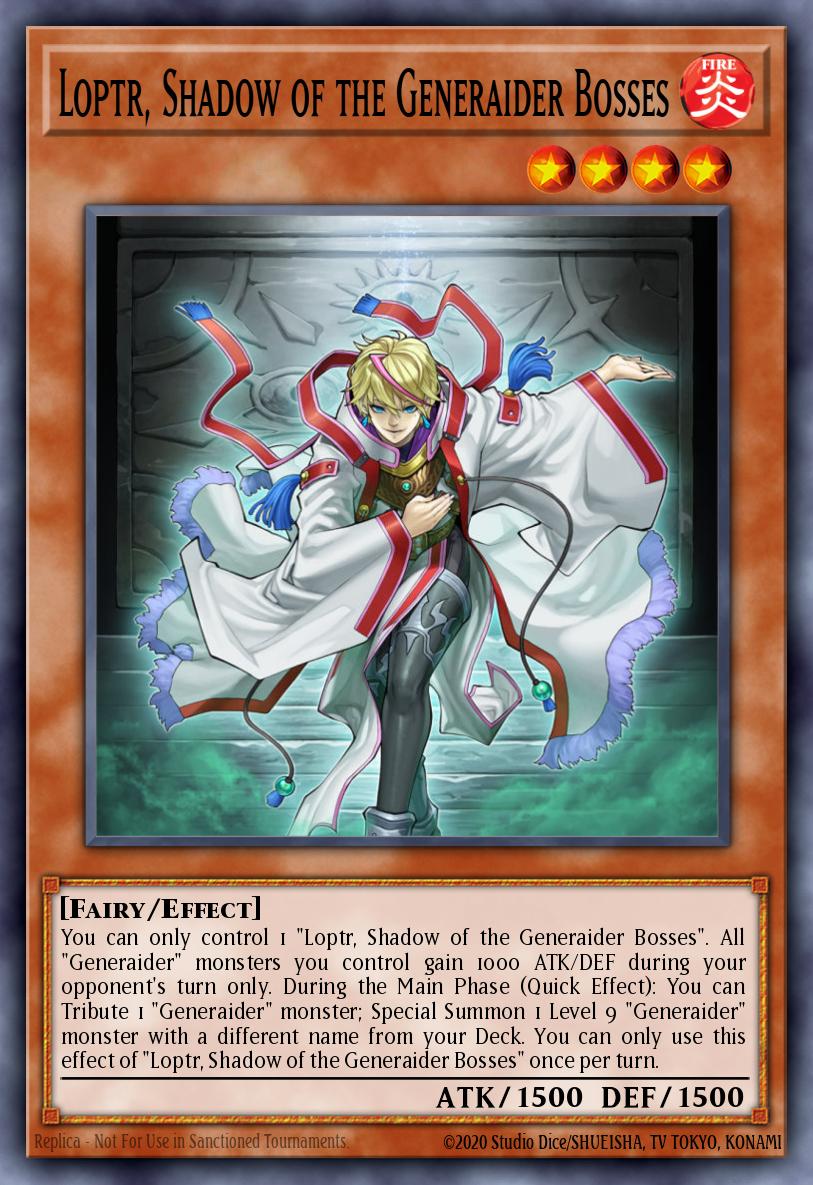
With the release of ETCO the deck would finally have its big breakthrough. It was finally time for Generaiders to prove that deck-build pack originals besides Rocks and Eldlich could actually compete in the meta.
For a deck that had been wanting a good normal summon for so long, Generaider got paid for with interest in Eternity Code. First was Loptr, Shadow of the Generaider Bosses, the only Generaider monster able to be summoned without outside help. This archetypal Lonefire Blossom was an upgrade over the regular one in every way possible. Not only could it bring any monster in your archetype, it even had additional utility during your opponent's turn by tributing Boss Stage's tokens. To top it all of, it could also dodge Effect Veiler, unlike Lonefire.
The friend Loptr brought was what truly tied up the archetype altogether. Harr, Generaider Boss of Storms would finally give the archetype a meaningful way to interact. As if a huge boy and an omni-negate weren't good enough, his second effect finally made the multiple ways they had to plus the opponent seem sensible. It wasn't enough to make the likes of Boss Loot and Frodi playable, but it made Boss Fight and Jormungandr, Generaider Boss of Eternity way more powerful.
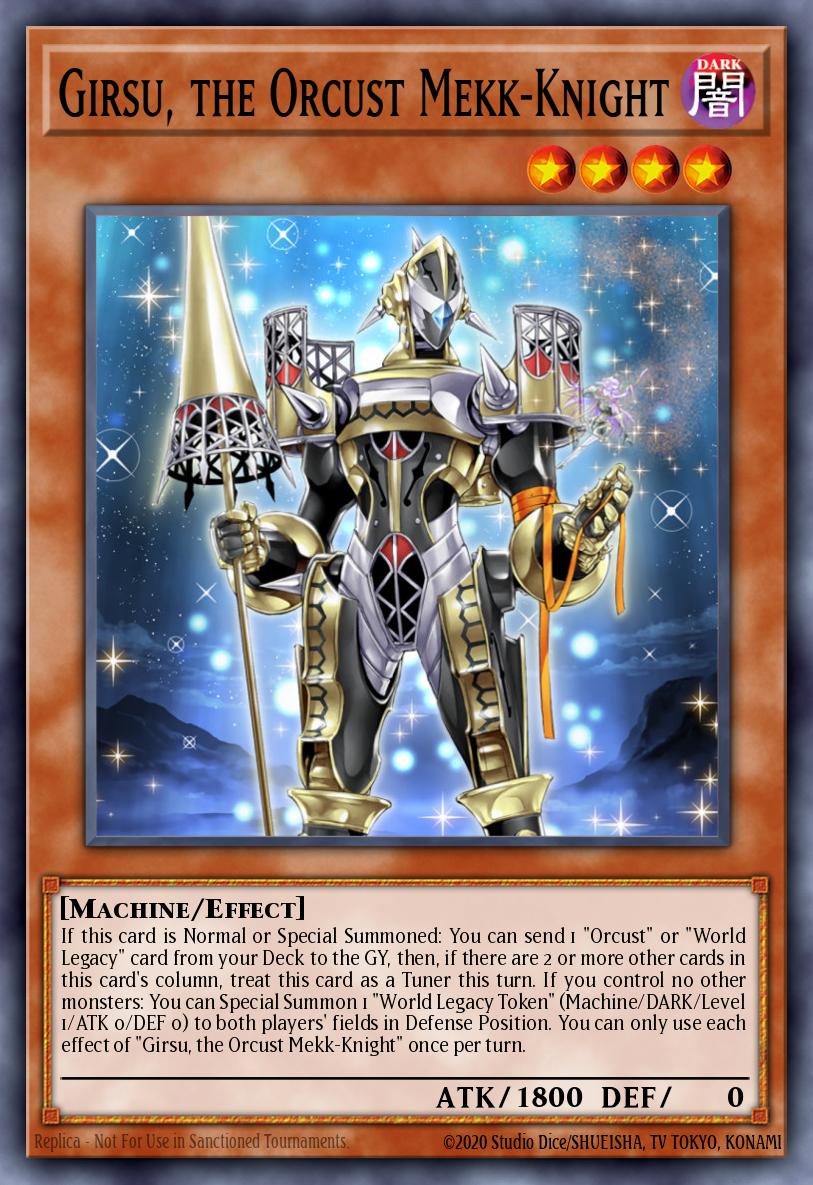
The true star of the show belonged to an entirely different Archetype:Girsu, The Orcust Mekk-Knight. Outshining Loptr as a NS, it enabled a powerful combo together with Lib The World Key Blademaster and Linkross. If Girsu's allowed to resolve, you can get a Boss Stage activated, their archetypal Xyz, a True King of All Calamities, and also rip a monster out of the opponent's hand. Then at the opponent's draw phase, a Harr is brought out to block any Infinite Impermanances that could void VFD.
Girsu could well be considered the strongest Normal Summon of the entire metagame when used in Generaiders. Even Jet Synchron, a card that deserves its name on the banlist, could be argued to give you less value than it (though Girsu can't compete when it comes to splash-ability).The card's so integral to the strategy that many are even running Mekk-Knight Purple Nightfall to search it out.
Conclusion
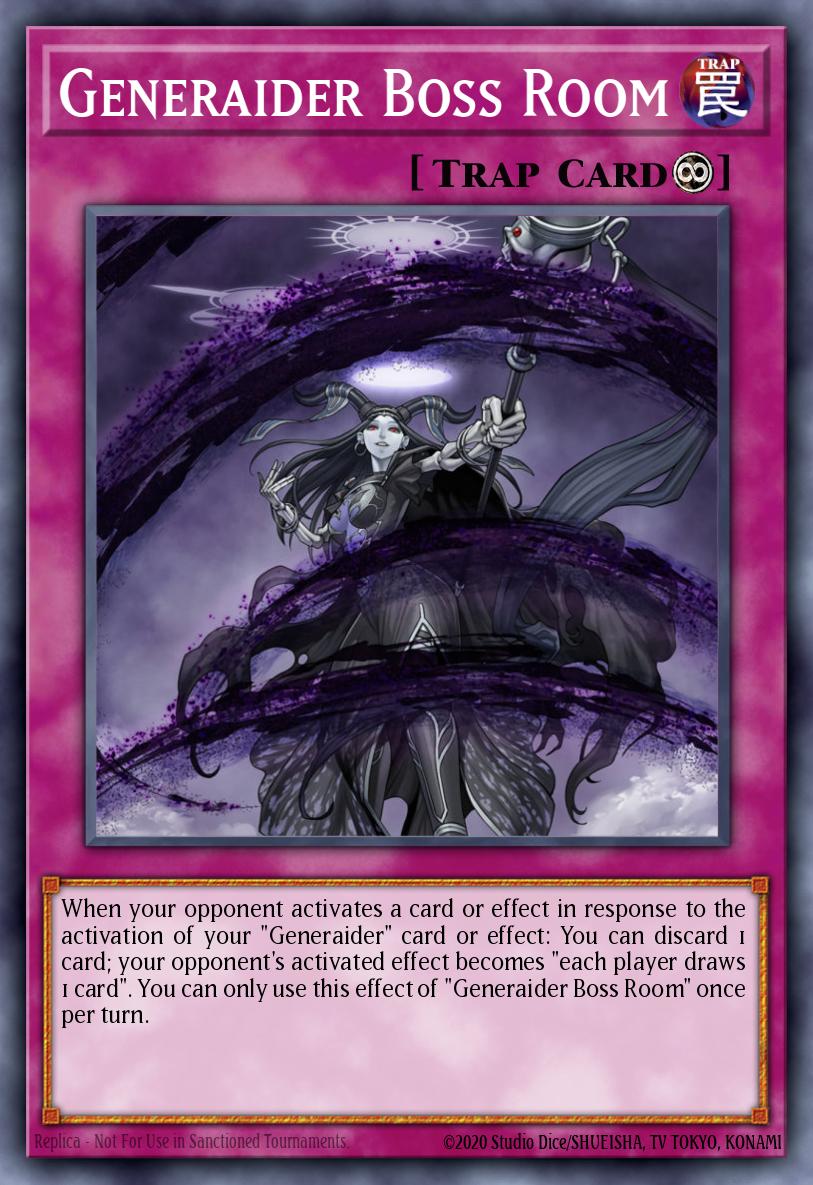
You really have to distinguish yourself to survive in the Secret Slayers meta. Despite a rough beginning, Generaiders now often claim their piece of the pie on the Top 16s of online tournaments. Even if it's a single spot, doing so at all shows how much potential they have. Their first turn boards can outclass both Adamanciptor's and Eldlich's. Few archetypes can claim they're able to show those two who's the real boss of this stage. There has even been some experimentation with them as an engine, using 3 Boss Stage and 1 Harr as an easy access to a negate.
With none of their central cards having targets on their backs, the future does look bright for Generaiders. Depending on how the metagame shifts after June 1st, the days of this archetype being merely Rogue could be almost over.




